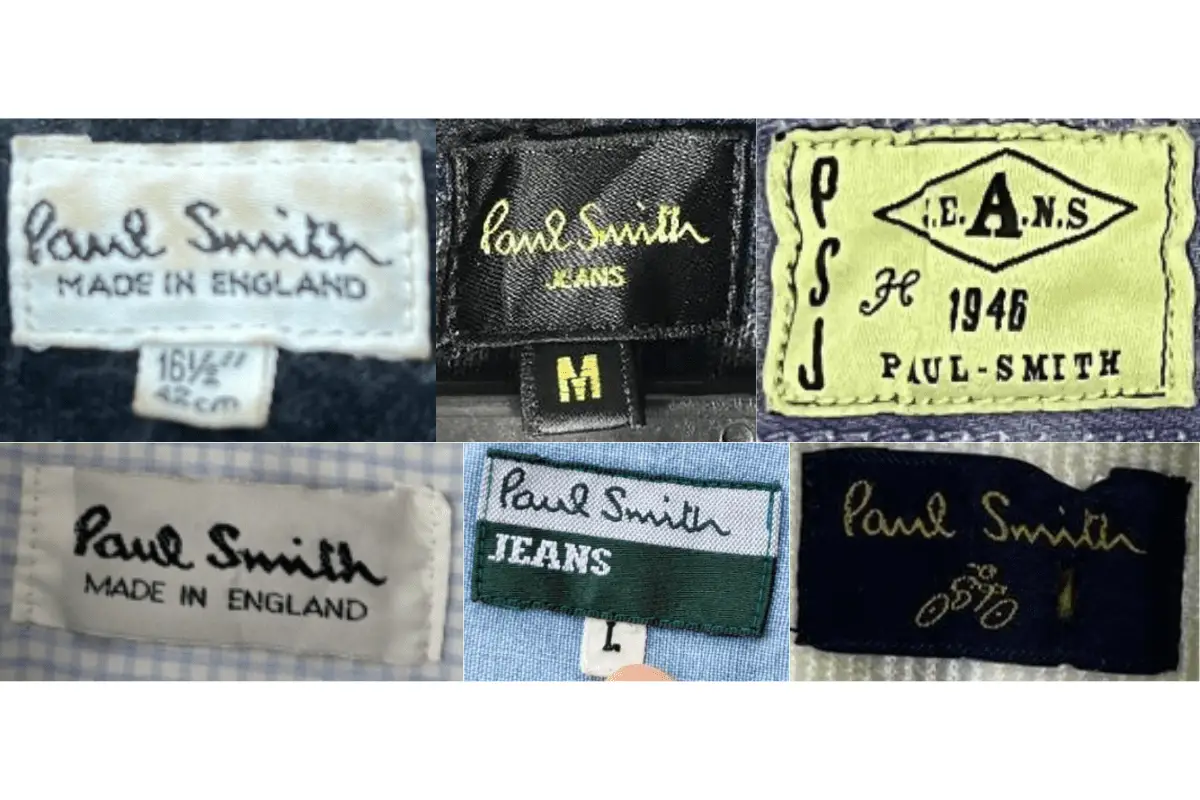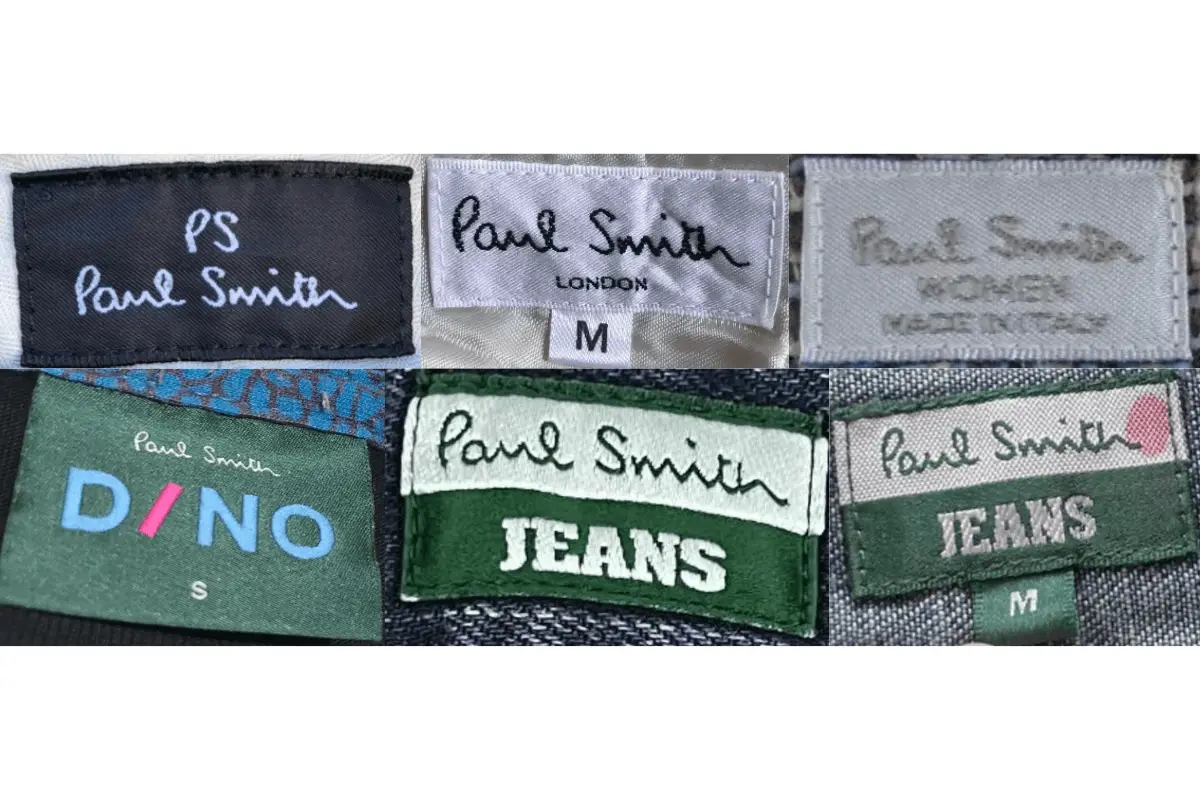The world of Paul Smith embodies a seamless blend of traditional British tailoring and contemporary flair, driven by the creativity and vision of Sir Paul Smith himself. From his humble beginnings in Nottingham in 1970 to establishing a globally recognized fashion powerhouse, Smith has transformed the way we perceive modern fashion. His eponymous label is known for its vibrant designs, quirky patterns, and exquisite craftsmanship, all while remaining rooted in timeless elegance. This reputation for excellence has earned him accolades like the Royal Designer for Industry designation in 1991, securing his status as a trailblazer in men’s and women’s fashion.
One hallmark of the Paul Smith brand is the distinctive logo—Smith’s handwritten signature—which has evolved subtly over the decades, offering valuable clues for discerning vintage enthusiasts. While the logo’s iconic style remains largely consistent, subtle variations in thickness, stroke, and accompanying tag designs can help identify the era a piece was produced in. From the playful “Paul Smith Jeans” tags of the 1990s to the bold “PS” branding of the 2000s, and the emergence of distinctive sub-labels like “Paul Smith Women” in the 2010s, each decade adds a unique chapter to the label’s storied history.
Beyond logos and tags, the evolution of Paul Smith’s international presence further reflects the brand’s eclectic appeal. From the first 3-square-metre shop in Nottingham to flagship stores in Los Angeles, Tokyo, and New York, the label has carved out its place as a pioneer of creative fashion. The fluorescent pink store in Los Angeles and the Greene Street flagship in New York exemplify the brand’s unique aesthetic that champions positivity and curiosity. The same values are evident in Smith’s whimsical special collaborations and distinctive collections, such as “Paul Smith Junior” and “R. Newbold.”
For vintage enthusiasts and collectors, the subtle differences in logo design and tags across the decades offer a fascinating glimpse into the brand’s rich legacy. Understanding the nuances of each period not only adds value to the collection but also enhances appreciation for the design evolution that has shaped Paul Smith’s enduring identity. Whether you’re a seasoned collector or a fashion novice, exploring these unique identifiers is an exciting journey into the heart of British fashion history.
Designer Paul Smith Interview
How to tell if Paul Smith is vintage from the logo
Paul Smith is a British fashion brand known for its colorful designs and timeless elegance. Founded in 1970 by Sir Paul Smith, the brand has maintained a consistent image that merges traditional British tailoring with contemporary trends. Its recognizable logo is a hallmark of its identity, serving as a window into the evolution of the brand over the years. The brand’s emphasis on quality and detail is reflected in the logo, making it a key feature in determining the authenticity and age of Paul Smith items.
While the logo has remained fairly consistent in design, subtle changes across eras help vintage fashion enthusiasts distinguish between different periods. These differences can reveal a lot about the era in which a piece was produced, providing valuable insights for collectors, enthusiasts, and resellers alike. Here is a breakdown of the Paul Smith logo from 1970 to the present day.
1970 to now Paul Smith logo
- The logo features Paul Smith’s handwritten signature, which adds a personal and distinctive touch.
- It has remained largely consistent throughout the decades, contributing to its recognizable and iconic appearance.
- Minor changes may include slight variations in the thickness or style of the strokes over time, but the general design remains the same.
- Its timelessness reflects Paul Smith’s dedication to maintaining the brand’s original aesthetic while evolving with the fashion industry.

1970 to now Paul Smith logo
How to tell if Paul Smith is vintage from the tags
Paul Smith, a renowned British fashion designer, has established a legacy through his distinct style that combines tradition with contemporary trends. Each era of his clothing showcases his innovative designs and unique use of materials. Over the decades, Paul Smith’s garments have been adorned with a wide range of tags that reflect the spirit and aesthetics of their respective periods, providing a useful guide for collectors and enthusiasts.
In this guide, we will explore how to identify vintage Paul Smith tags from the 1990s, 2000s, and 2010s. By understanding the distinctive features of these tags, you can accurately determine the decade a particular piece was produced, giving you a deeper appreciation of Paul Smith’s design evolution.
Can’t figure out your vintage tags or labels? Upload a picture on our vintage tag identification page, and we’ll assist you!
1990s vintage Paul Smith tags
- Often rectangular, featuring “Paul Smith” in the signature cursive font.
- “Made in England” appears prominently on many tags, reflecting the brand’s origin.
- PSJ sub-labels, such as “PSJ 1946,” are also included on some pieces from this period.
- Paul Smith Jeans tags have a characteristic yellow cursive font with “M” size labels.

1990s Paul Smith tags
2000s vintage Paul Smith tags
- Tags often incorporate bold “PS” branding alongside “Paul Smith” in cursive.
- “Made in Portugal” starts to appear on some tags, reflecting broader manufacturing practices.
- Separate “Size” tags accompany main labels on many garments.
- Paul Smith Jeans tags continue to feature, using distinctive green and white labels.

2000s Paul Smith tags
2010s vintage Paul Smith tags
- Various sub-labels emerge, such as “Paul Smith London” and “Paul Smith Women.
- “DINO” sub-label features a playful mix of colors for a distinctive look.
- Modern styles like “Paul Smith Women” indicate the expansion of the brand.
- Jeans tags often feature the classic “Paul Smith” signature in white on green backgrounds.

2010s Paul Smith tags





Venture into the expansive galaxy of EVE Online. Test your limits today. Fight alongside millions of explorers worldwide. [url=https://www.eveonline.com/signup?invc=46758c20-63e3-4816-aa0e-f91cff26ade4]Free registration[/url]